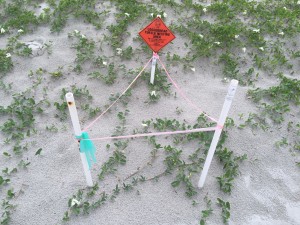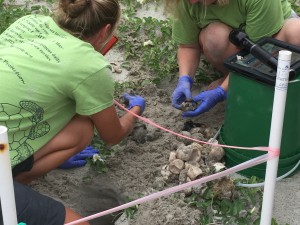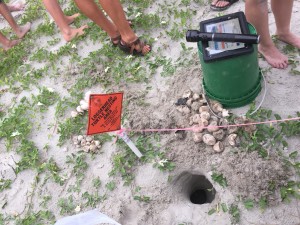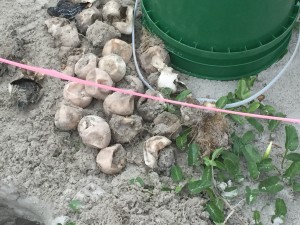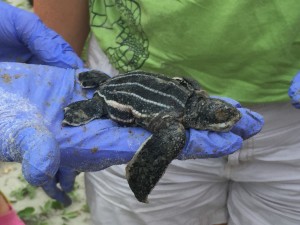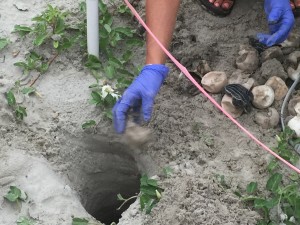Loggerheads account for 99% of the nesting sea turtles on Hilton Head Island, with the most endangered species, the Leatherback, having only nested here a handful of times in the past 20 years. The Leatherback usually nests in the warmer waters of Florida, the Caribbean, and Central/South America, although for unknown reasons there has been an increase in nesting farther north.
This year there were two Leatherback nests on the island, with one nest chamber located and marked. The first was laid on May 8 and after reaching the max incubation period of 75 days with no sign of emergence (hatchlings!), members of the HHI Sea Turtle Protection Program opened the nest to check viability. Three eggs were “candlewicked” (a light shown through them); two were unfertilized, but one had a viable hatchling. The team member could even feel the babe moving around in the egg!!. The SC Dept. of Natural Resources advised the team to return the eggs to the nest and monitor an additional 10 days.
July 31 marked day 85 with still no sign of emergence. Because Leatherback nests are so rare here, volunteers with the Sea Turtle Program (including yours truly) were invited to watch the nest inventory. Sea turtle nests in SC are dug up and inventoried either three days after emergence, or once the max incubation period has passed with no sign of emergence. Counted are the number of eggs unhatched, eggs hatched, and hatchlings, dead and alive The SCDNR began monitoring sea turtle nesting activities in the late 1970s, using this information for nest management and sea turtle protection programs all along the state’s coasts.
I had attended a nest inventory the previous weekend and got to see two live hatchlings released into the ocean. That was a happy day!! There was no joy this evening. The nest that 10 days prior had contained living eggs now only contained unhatched eggs and dead hatchlings. I nearly cried.
Thirteen hatchlings had used their egg tooth to tear themselves free from their eggs, but somehow never made it from the nest, a sad repeat of the one fertilized Leatherback nest on the island in 2011. Most of the nests in the past 20 years have been unfertilized, possibly laid by females of this highly endangered species roaming far in search of mates. It remains unknown why the two (known) fertilized nests failed to emerge.
The final count was 13 dead hatchlings, 27 unhatched eggs, some obviously fertilized and one partially hatched, and 11 spacer eggs (smaller and filled with fluid but no yolk). This count was abnormally small as Leatherback nests usually average 116 eggs, including the spacers. I attended two more nest inventories last night of our usual island nester, the Loggerhead. No live hatchlings, but also no dead ones, with both nests hatching and emerging successfully. That, at least, was happy news.

